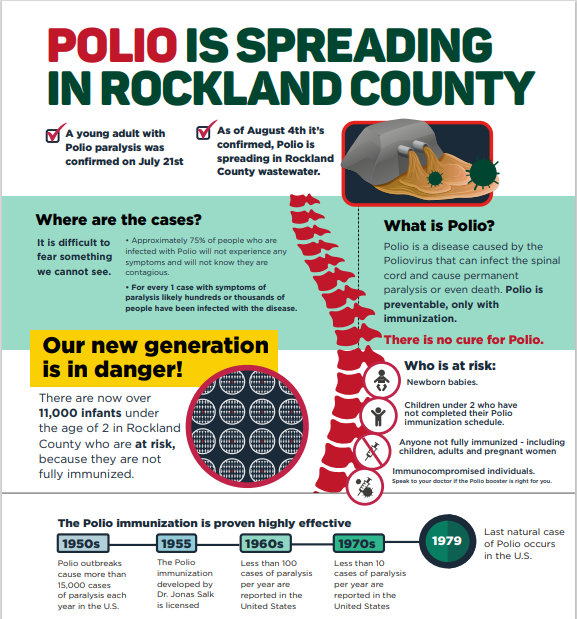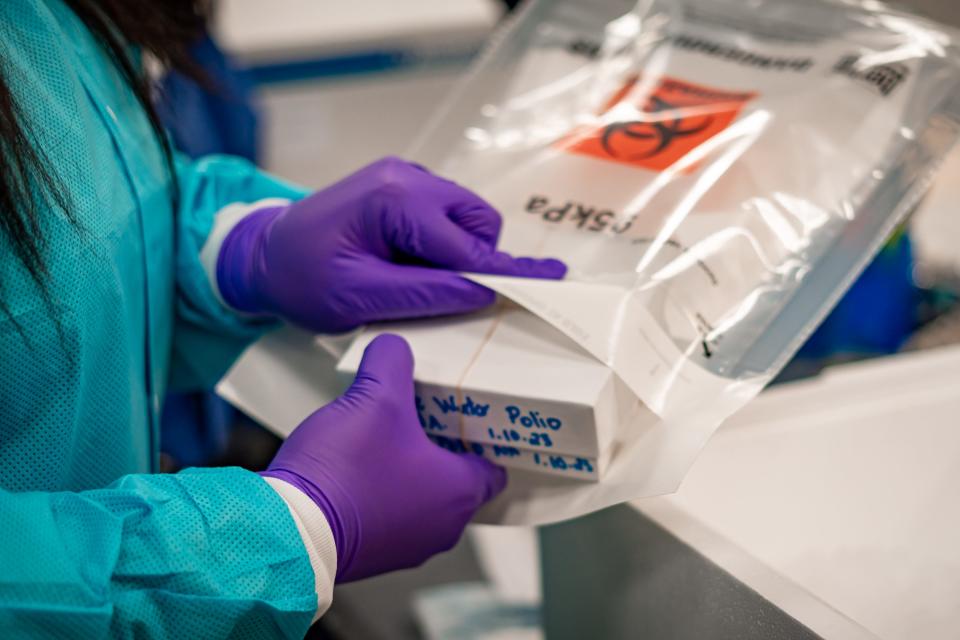State seeks scoop on poop to keep watch on flu, RSV, polio, other pathogens
New York state health officials are investing millions in a community source that’s flush with information about the presence of flu, RSV, norovirus, polio, COVID and more: sewage.
The State Department of Health announced this month it is boosting wastewater analysis – from 125 sewer sheds to more than 215. This will allow for monitoring of various diseases in the 81% of New York's population that's served by sewer systems. The $21.6 million cost includes a $6.6 million grant from the U.S. Centers for Disease Control and Prevention and a three-year, $15 million investment by the governor’s office.
Why watch wastewater?
Viruses like COVID, the flu and polio end up in people’s digestive tract and are “shed” – in other words, we poop them out along with other bodily waste. Depending on the pathogen being tested, sewage can provide information about the presence of a virus, and sometimes the level and risk of spread.

The expanded pathogen testing will be piloted in Westchester, Erie, Onondaga, and Jefferson counties.
State health officials say they expect to learn a lot about community spread by comparing wastewater results with what an area is seeing in reported virus cases.
For some, it's too late: 9/11 responders and survivors now get coverage for uterine cancer
Polio again detected in New York wastewater: Virus found in Orange County after weeks of negative results
New COVID variant: What to know about the more contagious XBB.1.5
“Expanded wastewater monitoring is a good idea and a helpful tool that we can use to track the presence of pathogens," Westchester County Health Commissioner Dr. Sherlita Amler said. "The surveillance could help us identify potential public health threats in the making.”
The pilot testing will also look for antimicrobial-resistant genes. Antibiotic resistance can make it more challenging to treat infections and so-called "super bugs" that don't respond to usual medication protocols. The CDC has called the growing problem of antibiotic resistance an urgent global threat.
How COVID testing branched out
New York began analyzing sewage for COVID in March 2020, shortly after the state's first confirmed case. It was a pilot program by the state Department of Environmental Conservation.
Initially, the COVID wastewater surveillance concentrated on four counties − Orange, Onondaga, Erie and Albany. In late 2021, the state joined the CDC’s National Wastewater Surveillance System. By January of 2022, 14 wastewater treatment plans in five New York counties were participating; by December, all counties in the state had joined in.
That research led to the state's Wastewater Surveillance Network, which now draws data samples in every county. State health department partners include Syracuse University, the DEC, SUNY Environmental Sciences & Forestry, University at Buffalo, and Stony Brook University.
Used to find polio
When a young unvaccinated man from Rockland County was left permanently paralyzed by polio in July 2022, past wastewater samples taken from local sewer plants to track COVID were then tested for polio. The testing showed that the virus had been present in that county, and nearby locations, for months.

Wastewater testing continues in the downstate region to keep tabs on polio. This winter, wastewater testing turned up negative for polio for weeks, but recently, an Orange County sample detected the virus, which can lead to paralysis or death.
There is a key distinction between COVID and polio detection results in wastewater: levels of COVID circulating in a community can be gleaned by wastewater sampling. For polio, sampling shows presence and strain, but does not calculate the amount of virus circulating in a community.
The scoop on testing poop
The wastewater tested comes from composite samples, which combine sewage drawn over 24 hours. The blended contents of wastewater from multiple times over the course of a day gives a bigger picture than taking one sample of what happens to be flowing past at any given moment.
The added levels of wastewater sampling will also include measuring new COVID variants. Until now, the tracking of new COVID variants has mainly been done through clinical tests on infected people. The wastewater testing will boost efforts to keep tabs on new COVID variants and how they spread.

For common viruses like influenza and RSV, many people don't end up getting tested and diagnosed, so wastewater sampling can help keep tabs on these more common sicknesses.
Staff writer Chris McKenna contributed to this report.
Nancy Cutler writes about People & Policy. Follow her on Twitter at @nancyrockland.
Click here for her latest stories.
This article originally appeared on Rockland/Westchester Journal News: NY COVID, flu, RSV, polio testing with sewage surveillance ramped up

